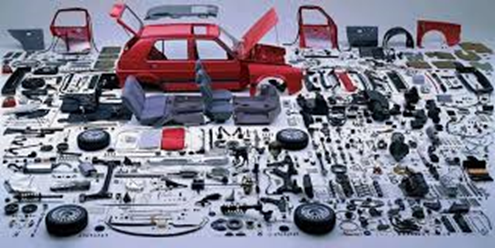Depending on where you are in
the world, you have experienced China-US trade issues, the global pandemic, and
Russia's attacking Ukraine. Manufacturers, retailers, and
wholesalers/distributors are dealing with high ocean rates, delivery delays, and
sourcing changes that have impacted inventory/product availability, procurement,
and more. Also, behind much of the freight rates and operations issues is high
demand that created volumes exceeding the capacity of logistics providers to
handle it.
Recognition has arisen that we
are in a time of continuous supply chain disruption. Add in climate change,
geopolitical concerns, and other issues that can affect business continuity.
The awareness that supply
chains are strategic and critical has firms asking themselves how they can
build resilience or risk mitigation. There are different approaches to doing
this. One is to reduce the products they carry, SKU rationalization. Another is
to carry more inventory, even overstock. Given all the items a firm may carry,
this may challenge warehouse capacity, throughput, and inventory turns,
sometimes called inventory rich and cash poor.
Another way is moving closer
to end markets where customers are. This means discussions about potential procurement,
sourcing, manufacturing, and supply chain changes and shifts. This has become
the reshore question
Companies are asking
themselves about what they make and/or buy and where it should be done. The challenges that companies have
experienced go against traditional risk aversion with change.
Some talk in terms of deglobalization
as a way of building resilience. It is labeled as reshore, onshore, nearshore,
and same shore. It raises the
question whether decades of low-cost products will be undone by two years of
supply chain disruptions? Also, will
a firm's changes will be an all-or-nothing? Or is there a hybrid path?
No matter, what we are talking
about is not shifts. No matter the
terminology, it is realigning supply chains. This includes sourcing,
production, procurement, and end-to-end supply chain management.
The above sets the stage for
what comes next—what to do and how to do it.
There are two parts to a realignment project:
Step 1. Call
it Phase 0. This is what you are thinking as to reshoring. Do you want to move
it onshore, nearshore, or stay same shore? There are points to consider which
can vary by industry, market sector, or type of business—manufacturing, retail,
wholesaler/distributor. These can include:
·
How critical your products are. This showed
early in the pandemic with PPE, personal protective equipment. Much of these items were made in Asia which
had shutdowns. That had serious implications.
·
How valuable your products are. There are costs
to making changes. Generating a return on investment, or ROI, reflects the
value of what you want to shift. In turn, this dynamic has a different standing
with low-value items.
·
A classic battle. Somewhere in all this will be
the labor vs capital issue. The labor reflects wages, training, education, supply
of employees, and related topics. Where do you put your money? Capital ties to
manufacturing and to building resilience through technology as compared to
engaging people.
·
The length of your end-to-end supply chain. The
shorter it is, the easier it may be to adjust to events. Length is also a
factor in the nonlinear, complex supply chain.
Step 1.5. There
may be less complicated options. These involve your suppliers.
Diversify. This
can be defined as a type of reshore. Look at your suppliers and
transport/logistics providers, especially the ones that are very
important. Can you reduce your use and
dependence on them? That can mean you pay higher prices by reducing your volume
commitments. But it will also spread your risk and improve resilience.
Relationships. A takeaway from the
last two years is to create supplier relationships that go beyond price and
traditional buyer-seller connections. This can be
easier said than done. But continuous supply chain disruptions have shown the
need for it.
Step
2. This is your analysis or assessment. It
presents an opportunity to see and understand your end-to-end supply chain—its
size and complexity.
You are looking at a range of
options—no changes, moving production or sourcing away from certain countries,
moving it closer to home, or transferring it to the home country. This also
means looking across your product spectrum. It requires a strong analysis of
what is required to make sound decisions.
Your work should include:
·
Recognize upstream. The recurring challenges with the past two+
years have been primarily upstream or the inbound supply chain. That is where suppliers are and where the supply of supply
chains begins. To add to the problem, the upstream is often
organizationally bifurcated as to procurement and transportation/logistics.
For too many, supply chain management is viewed and defined as and
by its transportation/logistics elements and not by upstream/downstream or
other relevant designations. The two parts are also managed in separate groups
in a company. And the performance of both is often measured by
costs.
·
Say suppliers, suppliers, suppliers. Detail what you buy from suppliers. What do
you see? What do you not see?
Supply
chains have been limited by Straight Line Thinking Syndrome, aka, that supply
chains are linear. Think of it as railroad tracks or the modern Flat Earth
Society. Something that is an urban myth; it has never existed.
You
see many suppliers for your products, parts, assemblies, and components. Think
of your bills of material. One of yours may look like this:
But
there is more.
Drill
deeper.
It
does not stop there. Your suppliers have
suppliers. And so on.
There
is a network of suppliers with interconnectivity. What you have are tiers and
layers of suppliers. The granularity of your inbound supply chain. If you are a
baseball fan, think of it as seeing a triple play.
All
the parts and the movements. Understanding this will prevent you from missing
parts at locations that you are moving from.
That can undermine the project.
Tier suppliers
as to priority. And layers of who they are, what they make, where they are, and
who their suppliers are.
Defining
and seeing the supply depth is something that blockchain and supply chain
visibility can miss. You cannot with your realignment.
Map
your complete supplier network. This enables you to see the size and complexity
of your nonlinear supply chain. It also presents a view of what you must understand
and assess.

Prioritize
Products. Companies can have many products and parts made outside of
their home country. So what do you
move?
Not
all your products, like your suppliers, are the same. You should prioritize your items for the
assessment and changes you may make.
Moving everything at once can mean cost and operations chaos which can
negatively affect your business.
Even
more, you may decide that you do not want to move every product or part. As
with inventory, there are A, B, and C items whether based on sales, profit
margins, supplier alternatives, or other criteria. This is important to your project.
Crunch
the Numbers.
This is
where everything leads. What does supply chain realignment mean to your product
costs and margins?
Landed
cost is the best cost to use. This is your buy price from suppliers, shipping,
customs, port, insurance, and related costs. An even better number is the
landed cost delivered. You should have the data to do the analyses.
Two
notes. Presently, you likely have contracts with suppliers and transportation
carriers. Changes may mean using non-contract prices and rates for the study.
To some extent, it creates apples and oranges. Be careful.
Also,
understand the quantity and quality of suppliers and transportation/logistics
services and providers. This is important to product availability and the
movement of your goods along the end-to-end supply chain.
Odds
and Ends.
· Are similar products or parts moving
from alternate ports? Do some research. There may be import data on your
products. This is good for understanding
if others are sourcing from wherever there is located.
·
Time—you
need to recognize it to do a thorough study. You need it to implement supply
chain realignment. Remember, where we are took decades to happen. Changes and
all the inherent details are not overnight adjustments. Ask yourself if your realignment is dislocate or relocate. The answer brings different challenges.
Conclusion. What does the future hold for
your supply chain, procurement, and supply chain management? Will it be framed around reshore, onshore,
nearshore, or same shore? Will it be about globalization, regionalization, or
global regionalization?
If you are considering supply chain realignment, you have
two choices. Just do it. Call it a knee-jerk reaction. Or do a thorough
analysis. Choose the latter to gain an understanding of your supply chain, minimize
risks, and improve any implementation.






